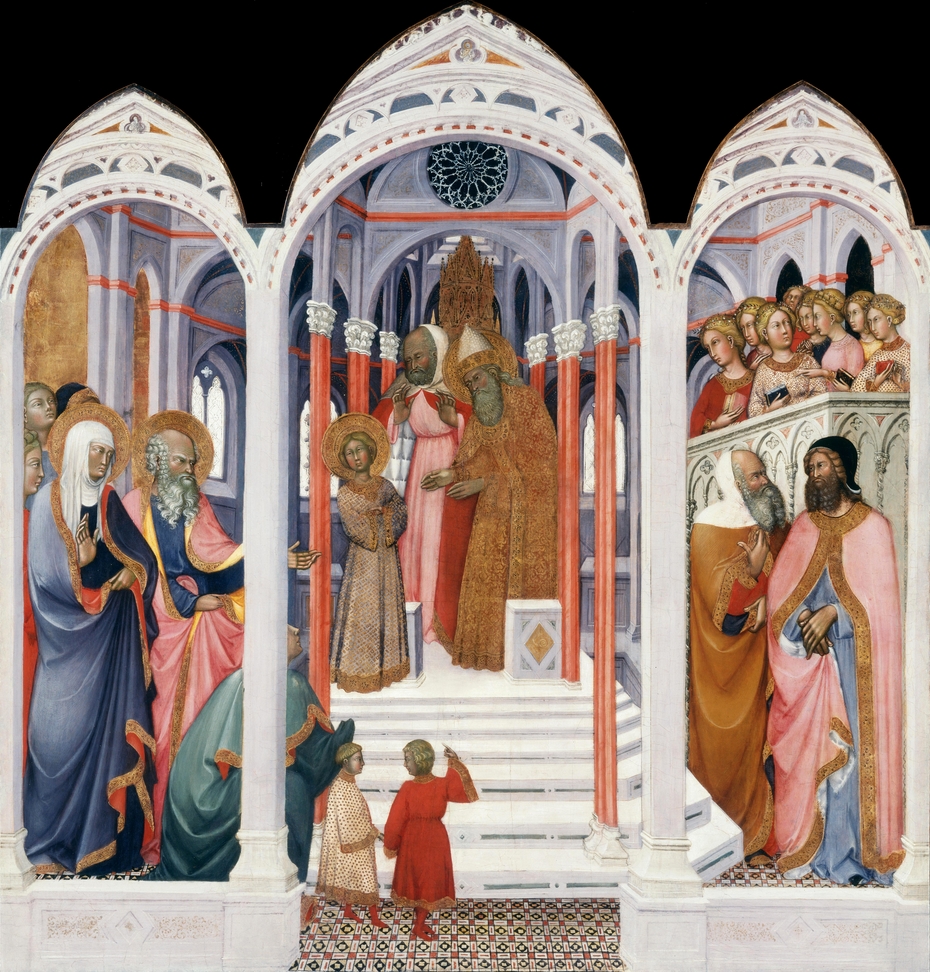The Presentation of the Virgin in the Temple

This engaging narrative scene was the center panel of an altarpiece commissioned in 1398 for the Chapel of Saint Peter, near the high altar of the cathedral in Siena. It would have been flanked, in all probability, by standing saints-one of them Peter-and surmounted by other saints shown half-length. Originally, the structure would have been gabled at the top, with elaborate gold moldings framing each section.
According to legend, the Virgin entered the temple in Jerusalem at age three and remained until she was 14. In this depiction, she stands at the top of the long stair with a last sidelong look at her parents, yet she remains fearless and strong. Like those of the high priest who receives her, Mary's robes are splendid gold brocade. These were created with a technique called sgraffito, in which paint is scraped away in patterns to reveal gilding below that is then textured with tiny punches. Equally lavish is the interior of Solomon's temple, which is treated as a Gothic church. The complex space is easily read, airy with lots of light and a brilliant palette-cool blues, salmony pinks, and glassy greens. A gallery at the right is filled with the girls who will be Mary's companions. One, at the back, seems to be on tiptoe, trying hard to see this girl who would be fed each day by an angel. On the other side, near Mary's parents, Anna and Joachim, another onlooker cranes for a glimpse and a woman kneels, her face half hidden by a pillar. Such rich details enliven and humanize a sacred event, making it more accessible to a contemporary viewer.